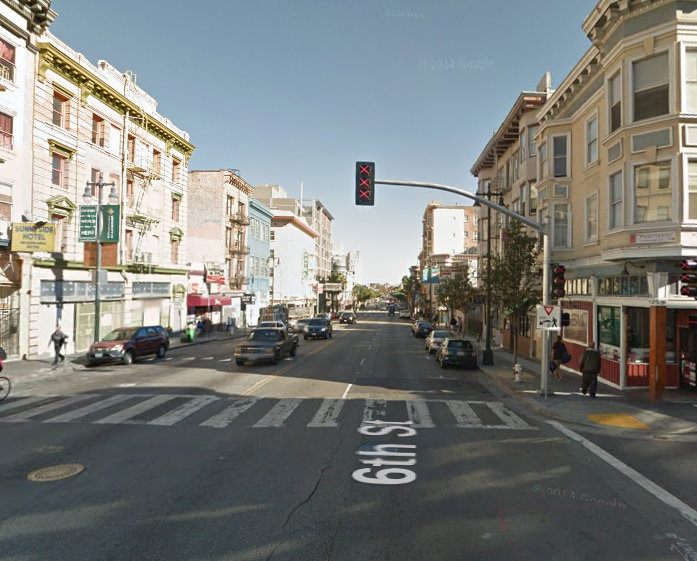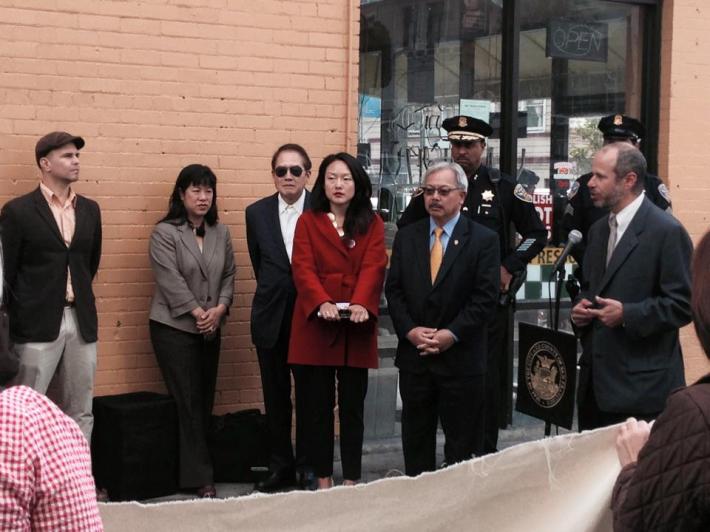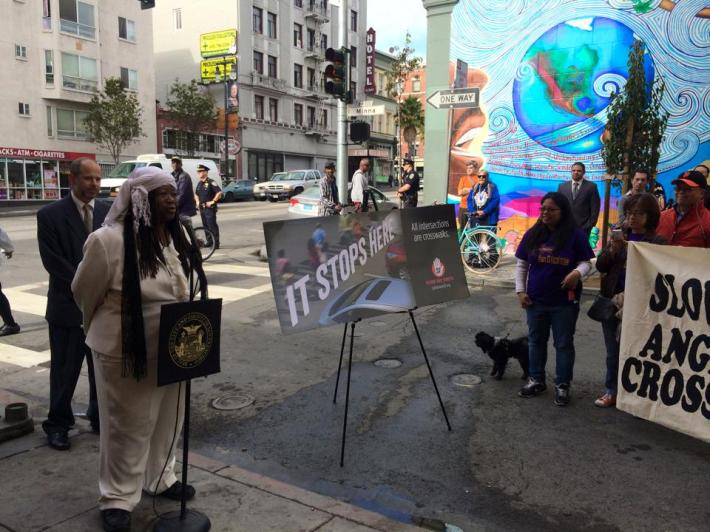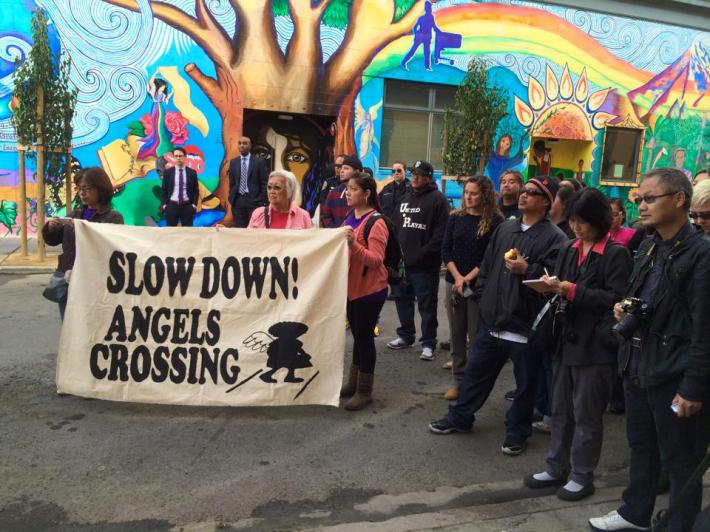
Mayor Ed Lee and D6 Supervisor Jane Kim held a press conference yesterday to activate a new pedestrian signal across deadly Sixth Street at Minna Street, a narrow cross street. Although a marked crosswalk had already existed there, drivers routinely failed to yield to people within it.
The button-activated signal is part of a package of pedestrian safety measures planned for Sixth Street, which decades ago had been designed to speed drivers between the Tenderloin and the 280 highway through the dense SoMa neighborhood, which resulted in an alarming rate of traffic violence. In the past seven years, Sixth has seen more than 50 pedestrian injuries and two fatalities just between Market and Howard streets, according to a Mayor's Office press release.
“Our families and seniors on Sixth Street know that mid-block crossings, turn restrictions and sidewalk bulbouts can actually save lives," Kim said in a statement.
“These tragic statistics are simply unacceptable, and we are working towards our new Vision Zero goal: zero traffic fatalities in the next 10 years,” said a statement from Mayor Lee. “Building safer, better streets is a critical part in saving lives."
Long-term plans for Sixth include a road diet that would remove two of its four traffic lanes and replace them with wider sidewalks and conventional bike lanes. That's expected to calm car traffic dramatically, but there's no construction timeline yet.

In the meantime, the SFMTA has added some other minor improvements. A year ago, the city's first painted sidewalk bulb-outs were added along Sixth, at Market, Mission, and Harrison Streets. The six sidewalk extensions were installed using temporary materials, initially including planters, which were removed after being soiled or vandalized.
The SFMTA recently expanded the bulb-outs to "wrap around key corners onto side streets and further increased visibility of the measures, by installing new plastic posts and durable 'StreetBond' paint," according to the press release.
Other livability measures on Sixth in recent years have included street trees, concrete bulb-outs, and more visible “continental” crosswalks. The SFMTA also lifted a rush-hour ban on curbside car parking in the eastmost lane of Sixth between Folsom and Market Streets, since parked cars provide a physical barrier between pedestrians and fast-moving vehicle traffic.

The new traffic signal cost about $300,000 and was funded by Proposition K local sales tax revenue, according to the Mayor's Office.
"We know just six percent of our city streets account for 60 percent of severe and fatal pedestrian injuries," SFMTA Director Ed Reiskin said in a statement. "And we are implementing proven safety measures."
Neighborhood street safety advocates have fought for improvements for years. As Kim noted, "This is just the beginning of the long-term safety improvements the city is committed to implementing along Sixth Street, which has the number one and three highest collision intersections in San Francisco."
"This is more than a Vision Zero commitment. It is a testament to the power of neighborhood advocacy,” she said.





